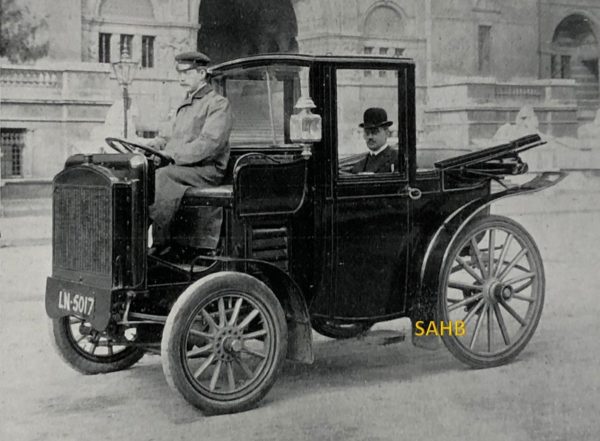
In these days of monocoque car bodies and totally integrated styling from front to rear (and inside), we tend to forget the experimentation that took place in the early days of the motor car. As it moved from horseless carriage to the settled arrangements that (mostly) pertained from around 1910, there were many and varied ideas as to the best location of motive power, transmission, driver and passengers – and how the body of the car should look.
One such experiment was the Pullcar, the creation of James Sydney Critchley M.I.M.E. Critchley is also known for his other positions in the nascent British car industry. He was Works Manager at Daimler from 1896, where in May 1898 he gave the Prince of Wales (later Edward VII) his first experience of motoring on English roads, driving him from Warwick Castle to Compton Verney and Wellesbourne. He left in 1900 to be ‘motor expert’ at British Electric Traction Co. In 1906 he designed vehicles using Crossley engines, sold as Critchley-Norris, and he was thought to be the designer of the first Crossley car, also in 1906.
These achievements, however, were not enough for Critchley. Again in 1906 he developed a front-wheel-drive car with the express purpose of freeing the coachwork designer of the constraints of the engine, transmission and rear axle. In a letter to The Automotor Journal of 19 October 1907, he explained his ideas:
“… I think I am correct in saying that up till now no motor vehicle has been introduced which has given the carriage builder a free hand in the execution of his work, but there are signs that such a vehicle is coming into use, at any rate for town work.
“With the usual form of rear-driven chassis, the carriage builder is subservient to the engineer, and must design his work in accordance with the chassis supplied to him. The wheel base, the height from the ground, suspension, and many other details, are already laid out for him by the chassis builder.
“I have for some months been using for town work a front-driven town carriage, built by the Pullcar Motor Co., of Preston, a photograph of which I enclose herewith.”
Critchley seems to have implied no connection between him and the Pullcar company, but he was the designer. He is seen seated in the rear passenger compartment. He went on in the letter to explain “the opportunities that exist for elegant carriage work” provided by the arrangement, in which all machinery was carried in the space between the front axle and the driver’s seat.
Sadly, the design appears to have absolved coachbuilders from pressure to create more modern designs that took account of the new form of motive power. All known pictures of Pullcars show traditional, indeed old-fashioned, coachwork. The design did conform to Metropolitan Police regulations for taxis, but few were built for this purpose. The company made no more cars after 1908.
Photo courtesy of The Richard Roberts Archive.







Leave a Comment